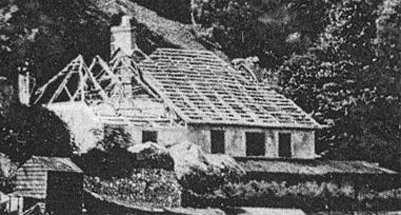Torquay had gained prominence since the early 1800s, and by 1885, its population had reached nearly twenty-five thousand, competing with Scarborough for the prestigious title of the “Queen of English Watering Places.” The town boasted a charming allure with its natural bay and a cascade of white limestone houses nestled amidst lush foliage. Torquay had always exuded an aristocratic atmosphere, attracting both tourists seeking leisure and individuals in search of a restorative environment. By 1885, St. Marychurch and Babbacombe had already transformed into suburbs of Torquay, shedding their previous status as separate villages.
Located half a mile northwest of Babbacombe, St. Marychurch was a hilly and leafy residential suburb centred around the parish church.
Babbacombe, a small and picturesque bay, lay two miles along the coast from Torquay. The village consisted of charming villas and cottages nestled beneath the protective cliffs, reached by way of a steep lane. In 1884, it boasted a shingle beach and a wooden jetty. Babbacombe was frequented by hardy fishermen, and their boats often dotted the shoreline. Visitors to the bay would either indulge in refreshments at the rustic Carey Arms or persuade a fisherman to take them on a boat excursion. The Glen, a residence of note, sat near the beach, facing the open sea.
“The Glen is located at the foot of the steep road that descends from the hill to Gasking’s Cary Arms, a well-known destination for picnic gatherings. It is a two-story thatched building, stretching along the beach and separated from it by a combination of walls and low iron fences. On its eastern side is the roadway, the sole access point to the beach, while the coastguard’s boathouse stands on the other side. Apart from the fishermen, a few inhabitants of nearby cottages, and patrons of the Cary Arms, the foot traffic in the area is minimal. Like all traditional houses of its kind, the rooms are modest in height, and there are several scattered outbuildings. A densely wooded plantation, crisscrossed by numerous paths, extends from the house up to the nearby downs.
During the summer, it is a delightful and compact residence, even inspiring sketches by Her Majesty The Queen. Members of the royal family have visited this place. However, in winter, it takes on a desolate appearance. The day Miss Keyse’s body was discovered, it presented a particularly gloomy aspect. The trees stood bare without leaves, a bitter east wind blew, and the sea churned with heavy waves.” – Torquay Directory and South Devon Journal
“The grounds encompass an entire side of a picturesque Glen, stretching all the way to the seashore. They possess a distinctive beauty, meticulously landscaped with shrubberies, woodland areas, and meandering pathways leading to secluded spots that offer breath-taking views of the coastline, extending as far as Portland Bill and the renowned Babbacombe Bay. There are also lawns suitable for playing croquet or tennis, as well as kitchen gardens and other horticultural areas.
The main residence stands on a level plateau, enjoying an elevated and sheltered position in a captivating setting. It features a grand hall, drawing and dining rooms measuring 27 feet in length each, a breakfast room, nine bedrooms, a room for the manservant, well-appointed kitchen and utility areas, a stable with three stalls, a loft, and a coach house. The property benefits from both hard and soft water supplies.” – Advertisement in The Torquay Times
At the time of the tragic events, Miss Keyse resided with two elderly maids, Jane and Eliza Neck, the cook Elizabeth Harris (who happened to be John Lee’s half-sister), and Lee himself, who fulfilled the roles of a footman and gardener.
The Glen was demolished in 1894, and the local council now owns the 13-acre property. In 1928, they constructed a tea room on the site, but it tragically burned down within a week. Today, in the place where The Glen once stood, there is a small car park and public toilets. Unfortunately, nothing remains of the rest of the estate, but some of the fishermen’s cottages and The Carey Arms still remain intact.


Here are the floor plans of The Glen, Babbacombe. The home of Emma Keyse and her servants was partially destroyed by fire on the night of her murder in 1884. However, for a few years later the Neck sisters, the loyal housemaids, carried on living in property.



